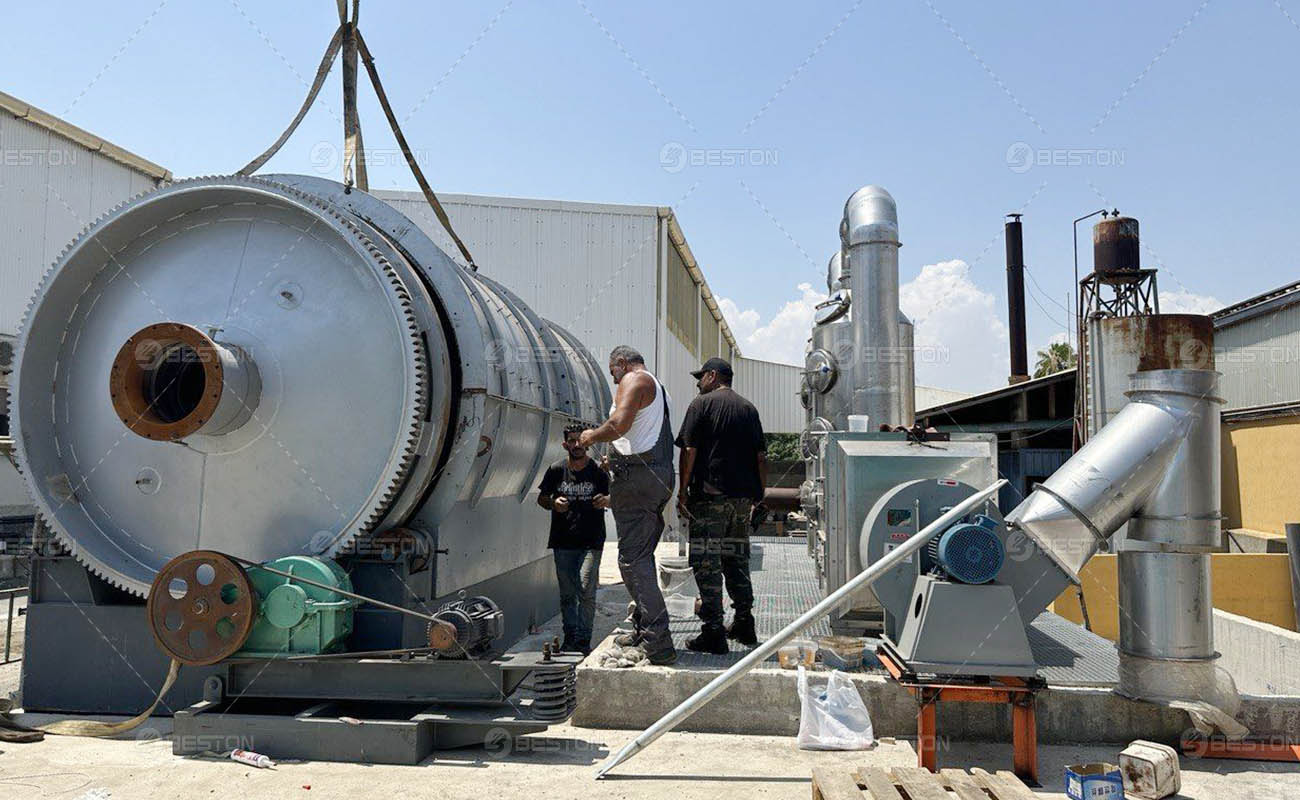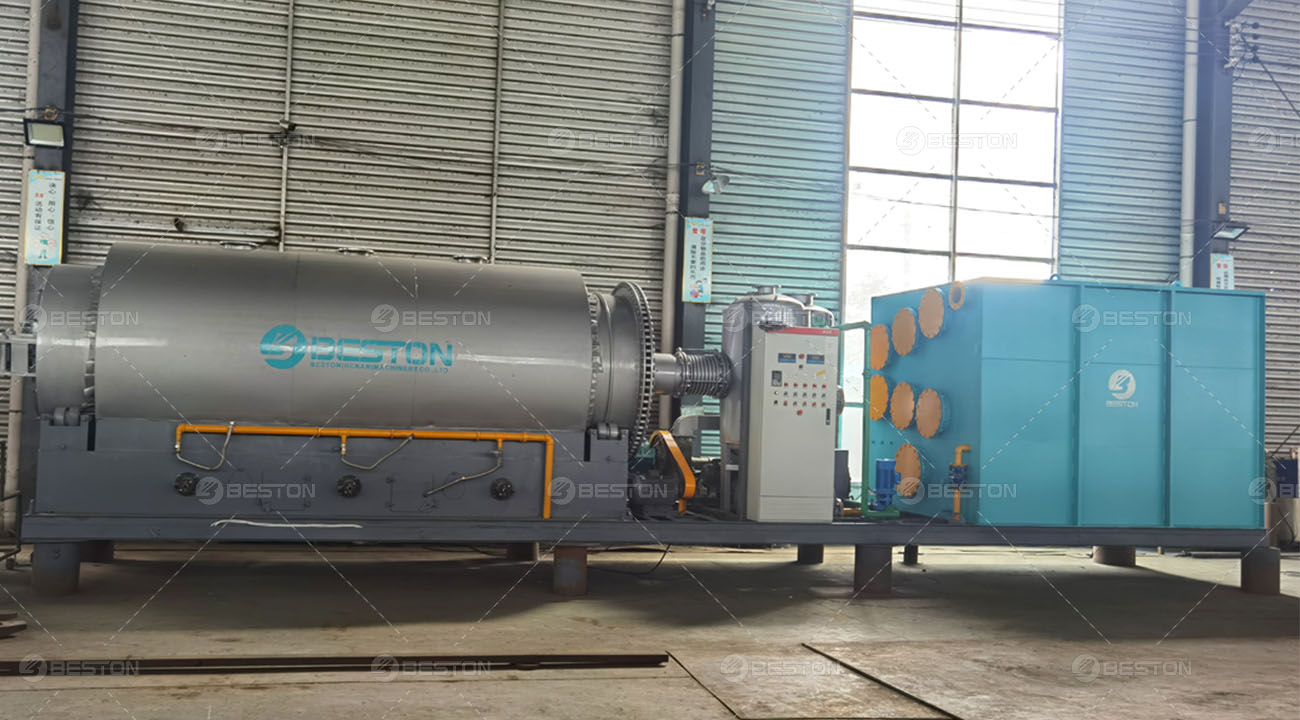In an era where sustainability and environmental consciousness are becoming increasingly significant, investments that align profit with planet-friendly practices hold substantial appeal. One such avenue that perfectly embodies this synergy is investing in a tyre pyrolysis plant. This article delves into the concept, process, benefits, economic viability, regulations, challenges, and success stories surrounding tyre pyrolysis plants, highlighting their potential as profitable, eco-conscious investments.
Understanding Tyre Pyrolysis
What is Tyre Pyrolysis?
Tyre pyrolysis is a cutting-edge waste management technique that involves the thermal desorption process of discarded tyres in the absence of oxygen. This process breaks down the complex rubber compounds into valuable end products, such as pyrolysis oil, carbon black, and steel wires.
Process of Tyre Pyrolysis
- Pre-Treatment: The process initiates with the shredding and pre-treatment of tires to increase their surface area and facilitate efficient pyrolysis.
- Pyrolysis Reaction: In a controlled environment, the shredded tires undergo pyrolysis at elevated temperatures. The absence of oxygen prevents complete combustion and results in the breakdown of the rubber into various components.
- Condensation and Collection: The volatile products of pyrolysis are condensed into liquid and gaseous fractions. The liquid fraction, known as pyrolysis oil, can be used as a fuel or as a feedstock in various industries. Carbon black, a solid byproduct, finds applications in rubber, ink, and pigment production.
Environmental Impact and Benefits
Reduction of Waste in Landfills
Tyre pyrolysis plant contributes significantly to waste reduction, addressing the mounting issue of tire disposal in landfills, which can take decades to decompose.
Energy Recovery and Resource Efficiency
The pyrolysis process generates valuable resources like pyrolysis oil and carbon black, offering an eco-friendly method of recovering energy and reusing essential materials.
Emission Reduction and Air Quality Improvement
Traditional tire incineration releases harmful pollutants into the air. Tyre pyrolysis, with its controlled environment, minimizes emissions, contributing to improved air quality and reduced environmental harm.
Economic Viability
Market Demand for Recycled Products
The market for recycled rubber products, including pyrolysis oil and carbon black, is growing due to increased awareness of sustainable alternatives across industries.
Cost Analysis and Return on Investment
- Initial Investment: Setting up a tyre pyrolysis plant requires a substantial initial investment in equipment, infrastructure, and permits.
- Operational Costs: Operational costs encompass expenses related to raw materials, energy consumption, maintenance, labor, and compliance.
- Revenue Generation: The sale of pyrolysis oil, carbon black, and steel wires, along with potential government incentives, contributes to revenue generation and return on investment.

Regulatory Considerations
Environmental Regulations
Pyrolysis plant for sale must adhere to strict environmental regulations governing waste management, emissions, and waste disposal to ensure minimal ecological impact.
Health and Safety Standards
Compliance with health and safety standards is paramount to protect workers and neighboring communities from potential hazards associated with the pyrolysis process.
Permits and Compliance
Obtaining necessary permits and complying with zoning laws are crucial steps before establishing a pyrolysis plant, considering the potential impact on the surrounding environment and community.
Challenges and Mitigations
Technological Challenges
- Process Efficiency: Optimizing the pyrolysis process for maximum efficiency and yield requires ongoing research and development.
- Product Quality: Maintaining consistent and high-quality output, particularly of pyrolysis oil and carbon black, is a challenge that demands stringent quality control measures.
Operational Challenges
- Waste Collection and Transportation: The process of efficiently managing waste tires involves a sequence of interconnected challenges. Initially, there’s the task of collecting discarded tires from various sources. Once collected, the focus shifts to transportation, which presents its own set of hurdles. Ensuring a smooth transition from collection points to the pyrolysis plant requires strategic planning and coordination. Effectively handling these challenges is crucial for the overall efficiency of the pyrolysis process. Each step, from collection to transportation, significantly impacts the final outcomes.
- Maintenance and Upkeep: Ensuring the smooth operation and longevity of the plant involves two critical aspects. Firstly, regular maintenance of equipment is essential. This helps in identifying and addressing potential issues before they lead to disruptions. Secondly, strict adherence to safety protocols is paramount. By following established safety measures, the plant can operate without compromising the well-being of its workers and the surrounding environment. Working with an experienced manufacturer is important if you want to succeed in both opportunities and challenges. Here we recommend Beston Group to you.
Conclusion
Embracing green investments like tyre pyrolysis plants not only presents lucrative opportunities but also contributes significantly to a sustainable future. With its dual benefits of waste reduction and resource recovery, investing in tyre pyrolysis embodies the essence of profitable environmental responsibility. As industries and communities increasingly seek eco-conscious solutions, tyre pyrolysis stands as a beacon of promise in the realm of green investments.